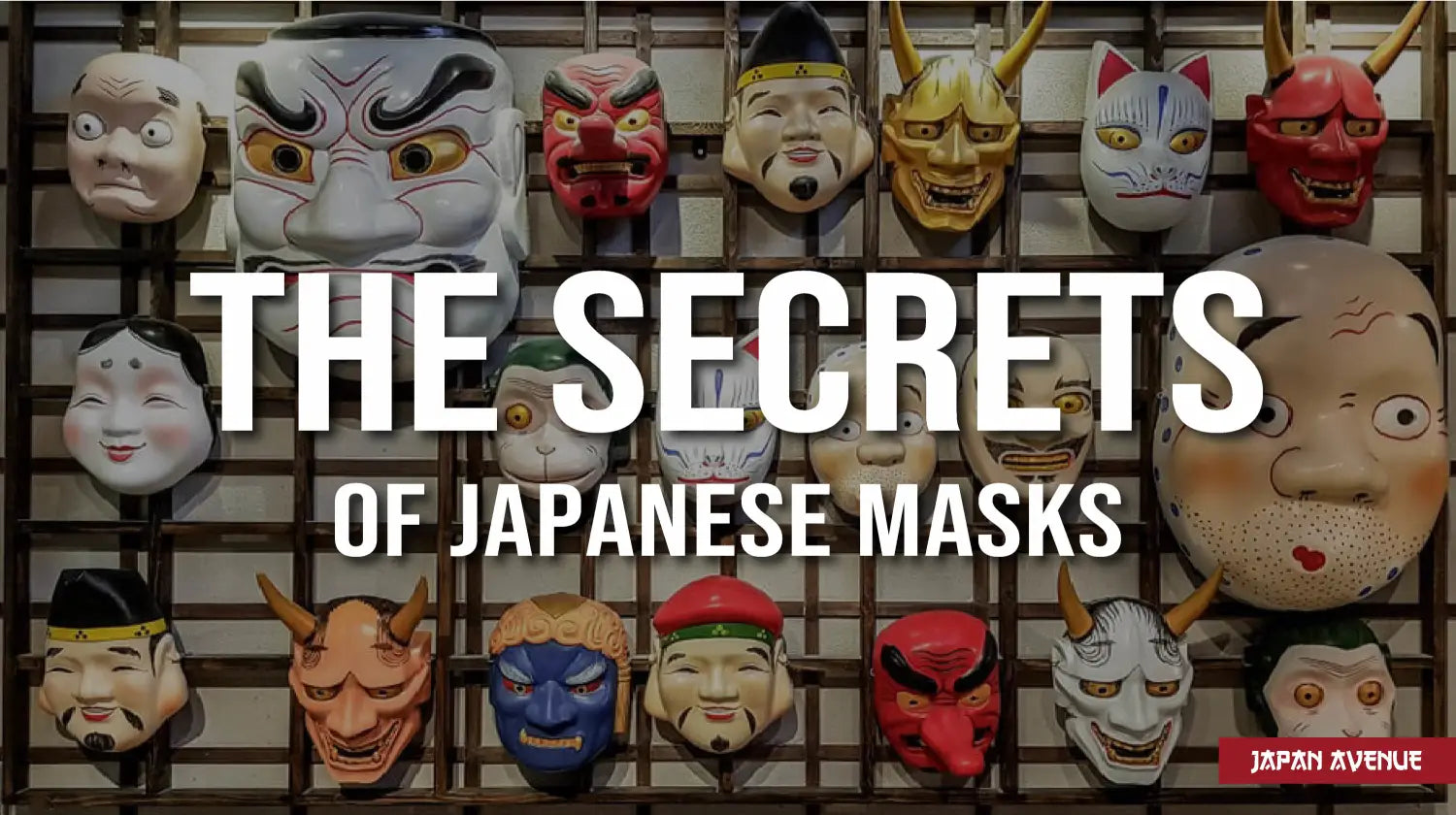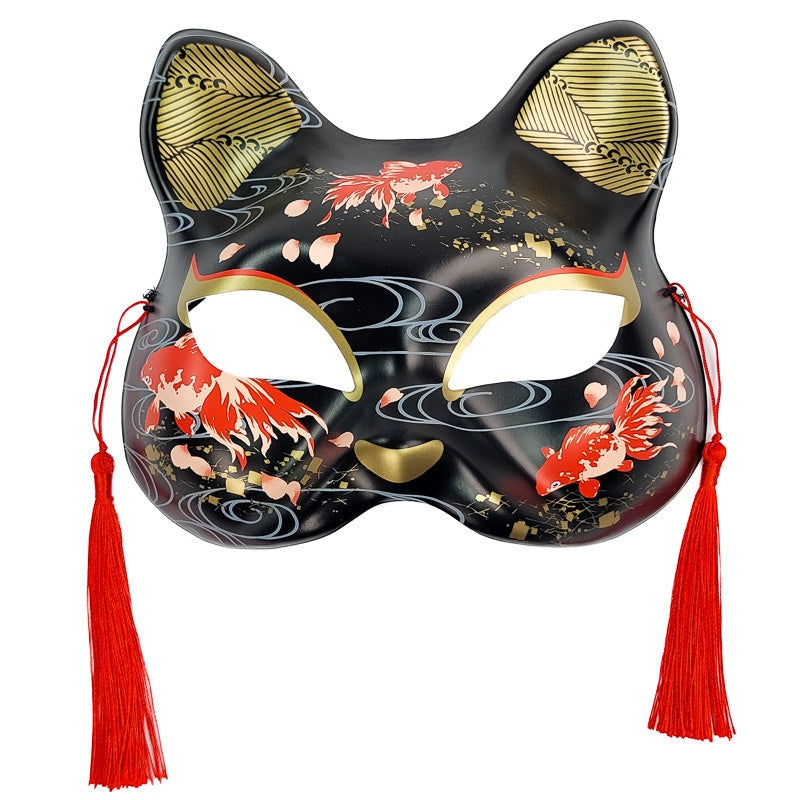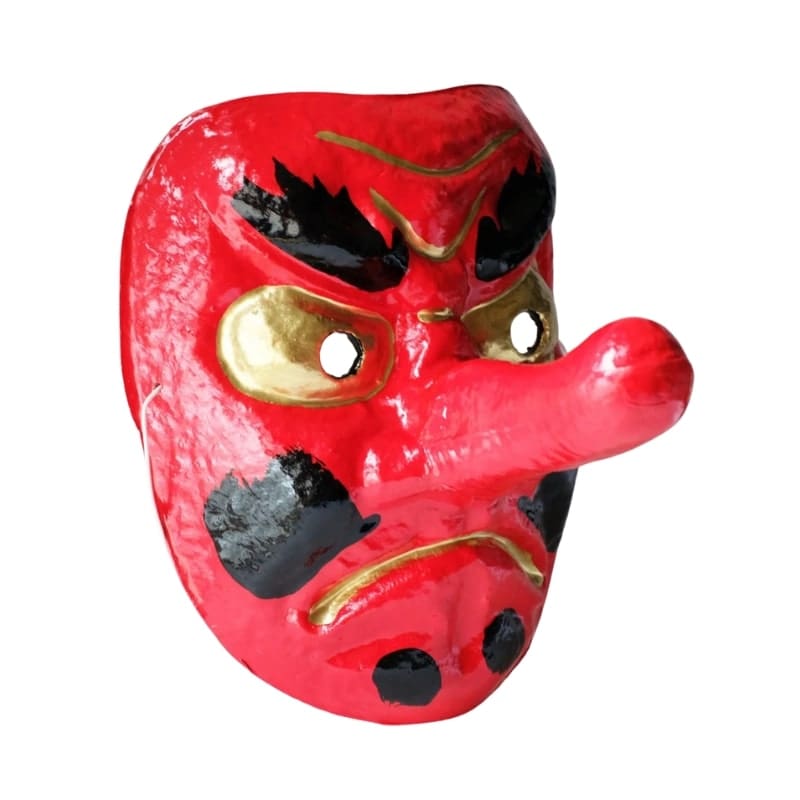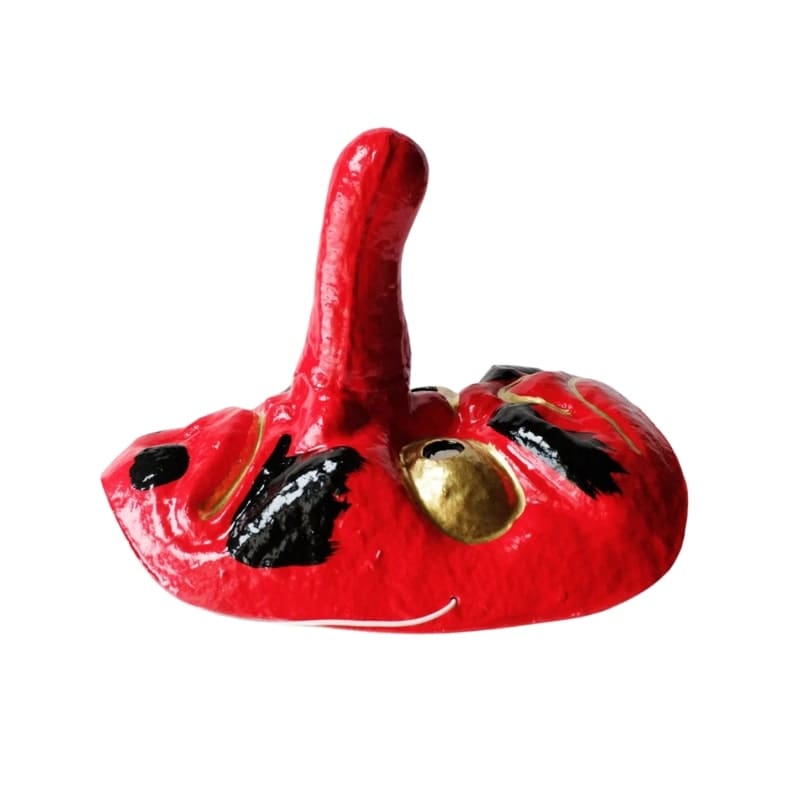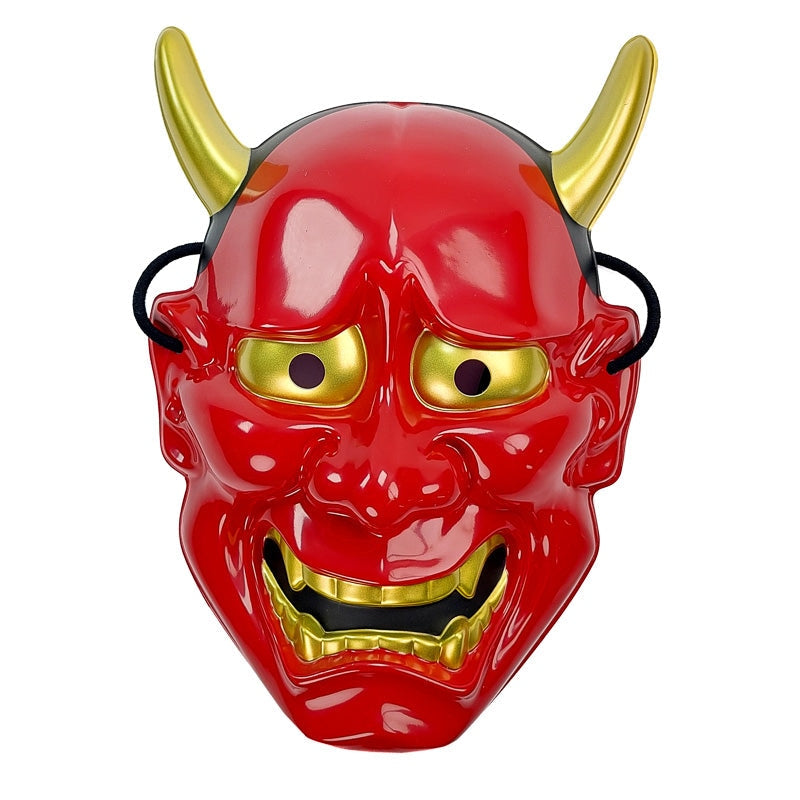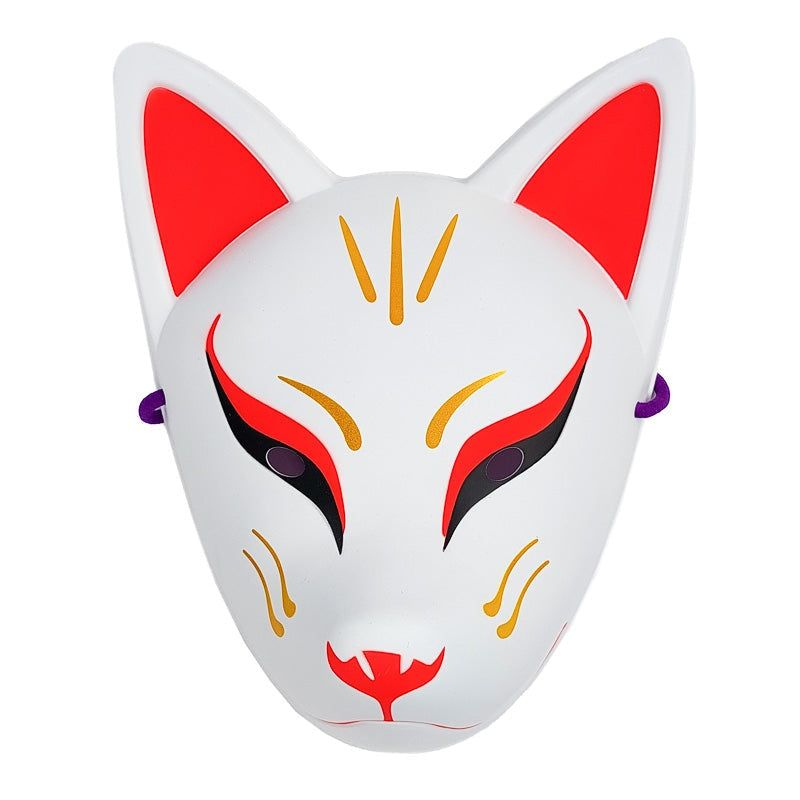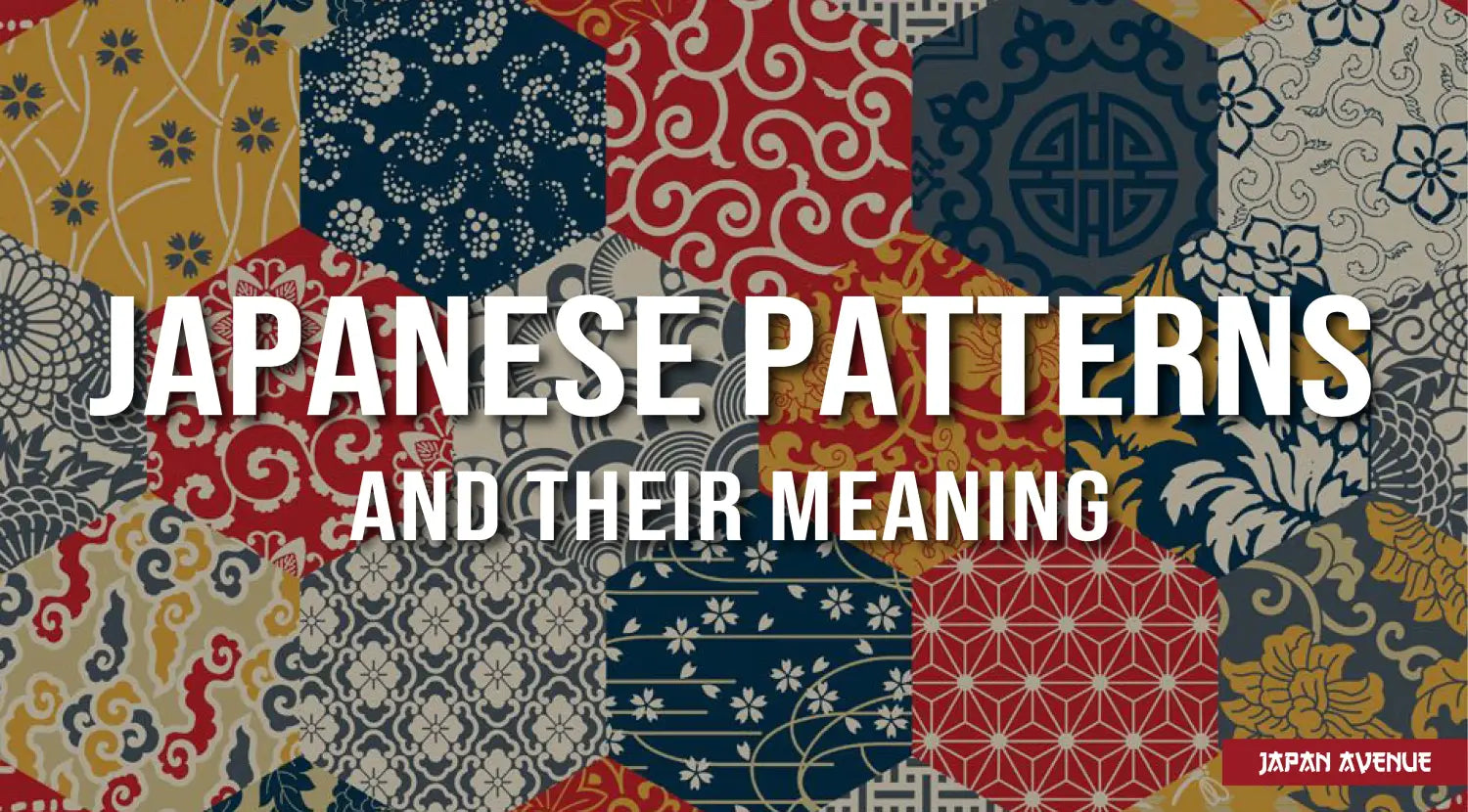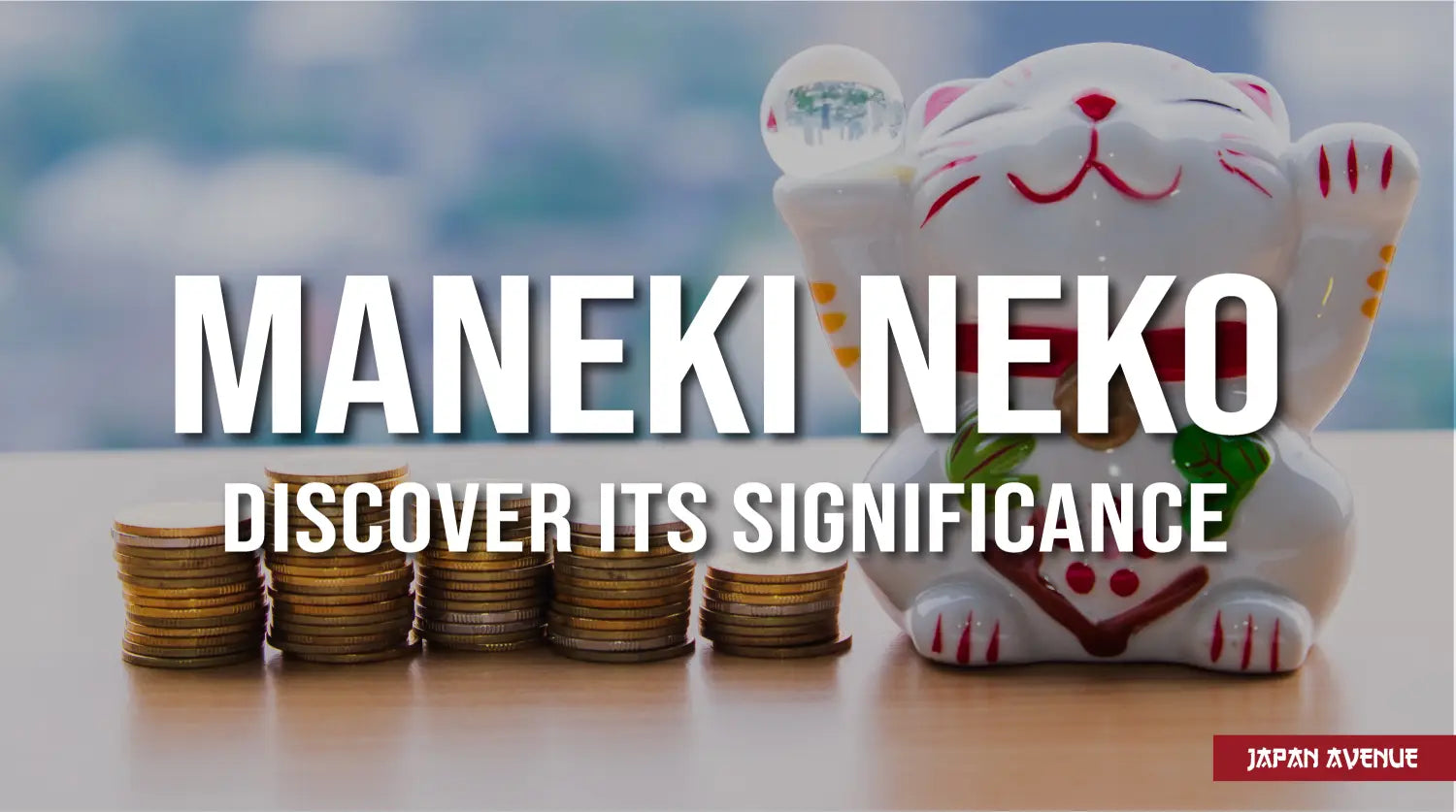With the current Coronavirus epidemic, masks are more present than ever before, and although Japanese people are very fond of the masuku face mask 😷, we are about to focus on a completely different style of mask.
The traditional Japanese masks occupy an important place in Japanese culture. In the Kabuki theater, they are used to embody characters, such as demons, or to translate expressions, such as anger. Each mask has its own meaning.
Even nowadays, traditional masks are still used by theater actors or Shinto dancers. You might also spot them in shrines or during the many Japanese festivals that punctuate the country.
Do you know how to recognize them? 🧐
Learn more about the origin and meaning of the most popular Japanese masks!
🎭 The origin of Japanese masks
As objects of art, religion or rituals, masks are omnipresent in most of the world's cultures. The oldest Japanese vestiges date back to prehistory. Back then, they were produced out of clay, except for the famous Ataka mask, which was carved out of shells. Provided with holes, it is quite possible that Japanese masks were already designed to be placed on the face.
Later on, according to an old Japanese tradition, masks were worn by dancers for religious cults, including the Gigaku mask. Kamen masks were imported from Korea and used to celebrate the art of dancing, singing and music before being used by Noh theater and kyōgen, around the 14th century.
Thus, the Japanese theater has maintained this ancestral tradition in Japanese culture.

Japanese Noh theater mask; Noh theater characters.
As a major element of the show, the mask comes to life when on stage. The actor merges with the character by wearing the mask on his face. As a result, Noh theater counts over 250 different entities (spirits, demons, men, women, old people). These masks are known to have different expressions depending on their inclination. As for the masks of kyōgen, these ones have a comical aspect and are absurdly exaggerated.
The mask of the Kabuki theater, the third type of Japanese theater, was rapidly replaced by a very complex and elaborated make-up, following very strict guidelines.
The making of Japanese masks, an ancestral handicraft
During the 16th century, with the influence of the Noh theater, a mask-making craft was born, of which Sankôbô was the first sculptor. Thereafter, he founded several schools in order to transmit his know-how.
Traditional Japanese masks are carved from a piece of cypress wood, covered with ceruse and then colored and lacquered. The details are painted with Indian ink and we can even find horsehair as hair or other pilosity.
Their particularity: their lacquered side creates a multitude of light and shadow effects, giving them many facets. 😮
The most popular Japanese masks are often inspired by the yokai; supernatural Japanese creatures that appear in popular legends and beliefs. Let's have a closer look! 😃
👺 The Tengu mask, feared creature of the mountains

Japanese Tengu demon mask; Illustration by Ai Tatebayashi
This Japanese demon mask with its crimson face and frightening look is very common in Japanese folklore. And with its long red nose... we can say he is easily recognizable! According to the legend, this figure is a remnant of his bird past, once he became human. In addition, the Tengu demon is often represented with a pair of wings on its back.
Considered to be both a yokai and a kami (Japanese deity), this Japanese war-heralding demon embodies the spirit of the mountain, much feared by the Japanese. ⛰️
Tengu masks are very popular in Noh theater as well as for Shinto celebrations. Besides, in Japan, if you are told to be "a Tengu" means that you are particularly pretentious...
😈 The Oni mask, the not so evil demon

Japanese Oni demon mask; Namahage Festival in Noshiro.
Angry face, sharp teeth, devil's horns... The Oni mask really doesn't seem friendly! You won't be surprised if you are told that it embodies the bad forces that are trying to take over the household.
Each year, Japanese people have the habit of driving the Oni away from their homes. This festival, called Setsubun or "the Bean Throwing Festival", takes place on February 3rd and marks the passage from winter to spring.
During this strange ritual, one member of the family carries a demon mask to embody the Oni that prowls around the house. Children, armed with a handful of beans, playfully throw it at him in order to frighten the Oni away. Once the demon is driven out, happiness and good fortune may take hold of the house for the upcoming year. 😊
In Northern Japan, at New Year's Day, there is another ritual where the locals wear Oni masks to frighten disobedient children: the Namahage. In exchange of gifts and Sake, they bring health and prosperity to the whole family.
🦊 The Kitsune mask, the magic fox of the Shinto festivals

Japanese Kitsune mask; Kitsunemai festival in Yoshiwara.
This fox mask originating from Japanese legends is worn on many festival-goers' faces during Shinto ceremonies. Messenger of Inari, the goddess of rice, business and prosperity, the Kitsune is a yokai that is worshipped as a kami (deity). For this reason Japanese people wear a mask with its effigy during these ceremonies... In order to attract good favors and thus ensure a good harvest! 🌾
This clever and malicious Japanese fox has many powers, including the ability to transform into a beautiful young woman: In human form, it plays at seducing men. Want to learn more? Read our article about Kitsune!
👹 The Hannya mask, the fearsome, angry demon

Hannya demon Japanese mask; Illustration by Jiaxian Jan.
This Oni demon's mask is one of the most popular in Japan. Often depicted in theaters and movies, Hannya, the ghost of a young woman, returns from death to seek revenge. Her anger and jealousy are absolutely frightening so... you'll better leave her quiet. 😅
Hannya's mask represents an angry face with two pointed horns, big sad and hateful eyes, a demonic smile with pointed canines and tousled black hair. She makes frequent appearances in Noh plays.
Declined in many colors with different meanings: red represents the crime of passion and jealousy; green represents anger and rage. If the head is tilted down, you will see an expression full of sadness, but as soon as the head is raised, it is anger you will read in those eyes. 👿
🔥 The Hyottoko mask, the god of fire

Japanese mask Hyottoko ; Matsuri (festival) de Hyuga.
Who never dreamed of producing gold with their belly button? 😂 That's exactly the power of Hyottoko, a legendary young man in Japan.
His funny face is represented in a very original way with a rounded mouth that is supposed to blow through a bamboo straw to light the fire. After all, he is the God of Fire! Hyottoko brings good luck to families of deceased people.
Hyottoko masks are commonly used during traditional Japanese dances in order to bring good luck.
💰 The Okame mask, the joyful woman masque

Japanese mask of Okame; Illustration by Horishishi.
A real lucky charm: this smiling mask with childish features brings luck and a long life. This actually is the feminine version of Hyottoko, with whom she often appears as a duo. She is also named "Otafuku" which stands for fortune. 💰
She's mostly found in small towns. Would you order a Okame mask and try to make fortune?
😱 The menpô, the frightening samurai mask

Japanese menpô mask; Traditional samurai armor.
The samurai, brave Japanese warriors, used to wear armor that protected them from head to toe. At the face, the menpô had the role of frightening enemies by representing a ferocious mouth.
Forged in iron or leather, these masks were often lacquered and decorated with details reminiscent of the famous yōkai or Japanese deities. Curiously, people do not particularly wish to face an army of samurai with devilish faces 😨
😆 The Ôbeshimi, a particularly evil demon

Japanese mask of Ôbeshimi; Puppet of Jacques Chirac, President of France from 1995 to 2007, on a French chain.
The Ôbeshimi is one of the most evil demons that claims to have the ability to threaten the human race. This Japanese mask is the spitting image of former French president Jacques Chirac.
🤔 What has become of Japanese masks today?

Japanese Oni Genji demon mask; Character from the video game Overwatch.
Since the dawn of time, traditional Japanese masks have always fascinated. Symbols of Japanese culture, they appear everywhere in modern society. For example, in the animated movie "Spirited Away" by Hayao Miyazaki, where you will notice a noh mask among the characters: the famous No Face.
Similarly, these art objects are a source of inspiration for many other creative fields, such as in the video game "The Legend of Zelda" as well as for tattoos.
For Japanese people, masks are primarily used to highlight the spectacular aspect as well as the parade during festive events and religious celebrations.

No Face in Spirited Away; Video Game The Legend Of Zelda.
That's it, you know all about the famous Japanese masks. If you also wish to transform yourself into a Tengu or if you are looking for a decorative art object to impregnate your interior with Japanese culture and to bring you good luck, do not hesitate to visit our store. 🙃

